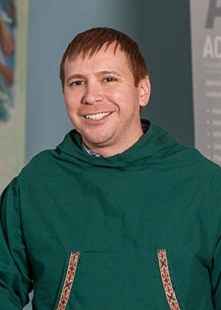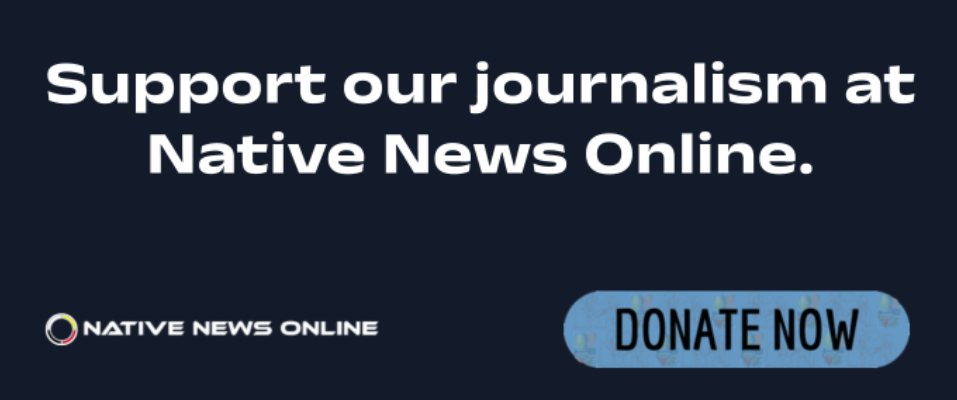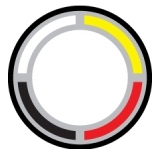The University of Alaska Anchorage announced on Thursday that Matt Calhoun, Ph.D. (Athabaskan) has been selected as the new full-time executive director of the Alaska Native Science & Engineering Program (ANSEP).

A graduate of ANSEP, former program assistant director, and associate professor of civil engineering at UAA, Calhoun has led ANSEP as interim executive director since spring 2023.
“ANSEP plays a critical role in UAA’s strategic goals of putting students first, embracing our diversity and operating as a trusted and respected community partner” UAA Provost Denise Runge said. “Matt’s strong dedication to ensuring all Alaska Native and rural Alaska students can succeed, along with his collaborative and creative approach to programming, made him the perfect choice to lead ANSEP into its next chapter. We are thrilled he has agreed to join our executive leadership team.”
In 2002, Calhoun became one of the first students to graduate with ANSEP after earning a bachelor's degree in civil engineering from UAA. After working as a project/field engineer across Alaska, he returned to ANSEP as a director to inspire more Alaska Native students to pursue an education in science, technology, engineering and mathematics.
"Stepping into this role at ANSEP is a tremendous honor for me. I know first hand just how pivotal this program can be, so I feel a great sense of pride and responsibility as I continue the legacy of ANSEP, guiding and inspiring the next generation of students,” Calhoun said.
Fully committed to his passion for education and educational equity, Calhoun decided to obtain a master’s degree in civil engineering, which he earned from the University of Colorado at Boulder, then followed by a Ph.D. in civil engineering from the University of Alaska Fairbanks. Notably, Calhoun was one of the first students to earn a doctorate through ANSEP and the first Alaska Native in the world to earn a Ph.D. in civil engineering. In 2015, Calhoun was appointed as assistant director of ANSEP and assistant professor of civil engineering at UAA, making him one of the university’s first Alaska Native tenure-track engineering faculty members.
“I want to encourage students like me, and all students in Alaska, to earn their degrees and become leaders in their fields and in our state,” Calhoun said. “As executive director I will remain committed to continuing ANSEP’s mission of making quality, affordable education available for all Alaskans. Together with the support of our strategic partners, who make it possible for us to provide all of these incredible opportunities, we’ll create even more pathways to success, ensuring that every student has the support and resources they need to thrive in their academic and professional careers.”
More Stories Like This
Hanging a Red Dress for Christmas: MMIP, Native Higher Education, and Hope for a Better New YearNative Students Can Win $5,000 Scholarship, International Distribution in Pendleton Design Contest
American Indian College Fund Raises Alarm Over Plan to Shift Native Programs Away From the Dept. of Education
MacKenzie Scott Foundation Gives $5 Million Contribution to Little Priest Tribal College
Tribal Leaders Push Back on Dismantling of U.S. Department of Education
Help us defend tribal sovereignty.
At Native News Online, our mission is rooted in telling the stories that strengthen sovereignty and uplift Indigenous voices — not just at year’s end, but every single day.
Because of your generosity last year, we were able to keep our reporters on the ground in tribal communities, at national gatherings and in the halls of Congress — covering the issues that matter most to Indian Country: sovereignty, culture, education, health and economic opportunity.
That support sustained us through a tough year in 2025. Now, as we look to the year ahead, we need your help right now to ensure warrior journalism remains strong — reporting that defends tribal sovereignty, amplifies Native truth, and holds power accountable.
 The stakes couldn't be higher. Your support keeps Native voices heard, Native stories told and Native sovereignty defended.
The stakes couldn't be higher. Your support keeps Native voices heard, Native stories told and Native sovereignty defended.
Stand with Warrior Journalism today.
Levi Rickert (Potawatomi), Editor & Publisher


